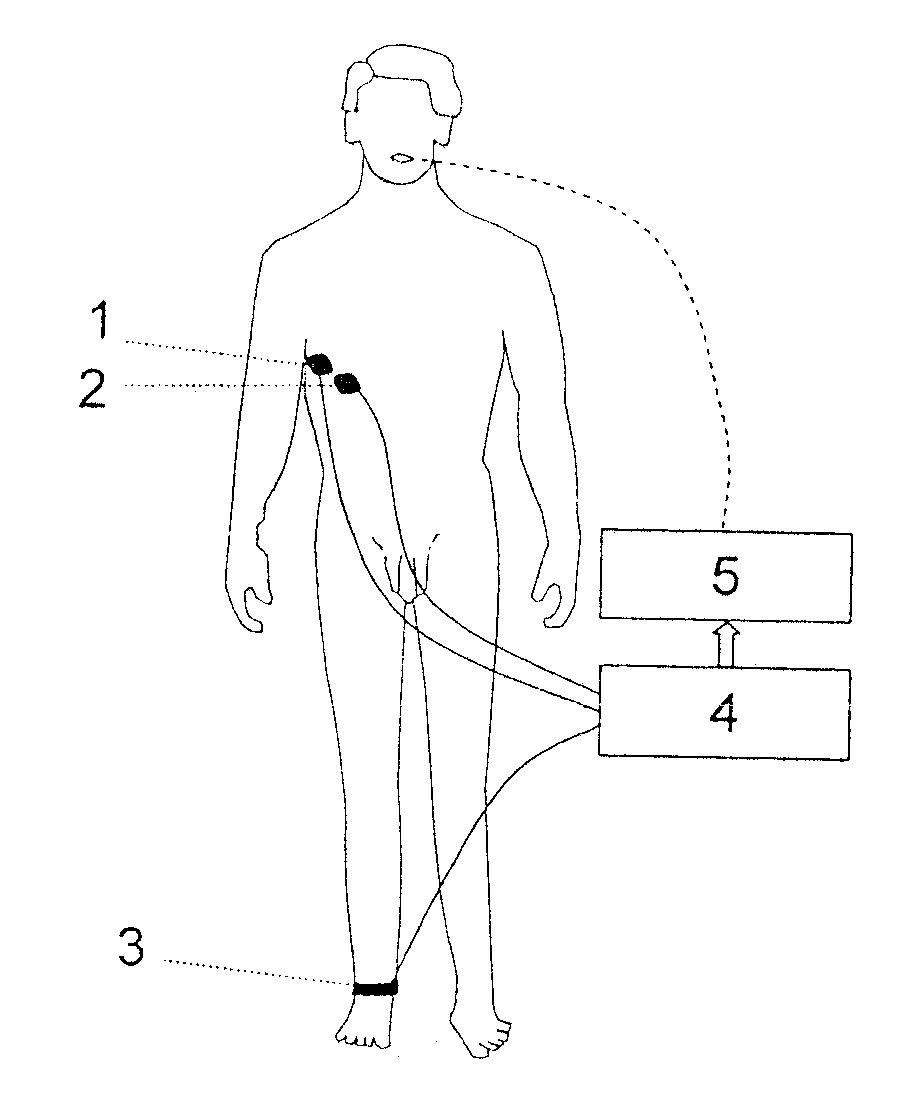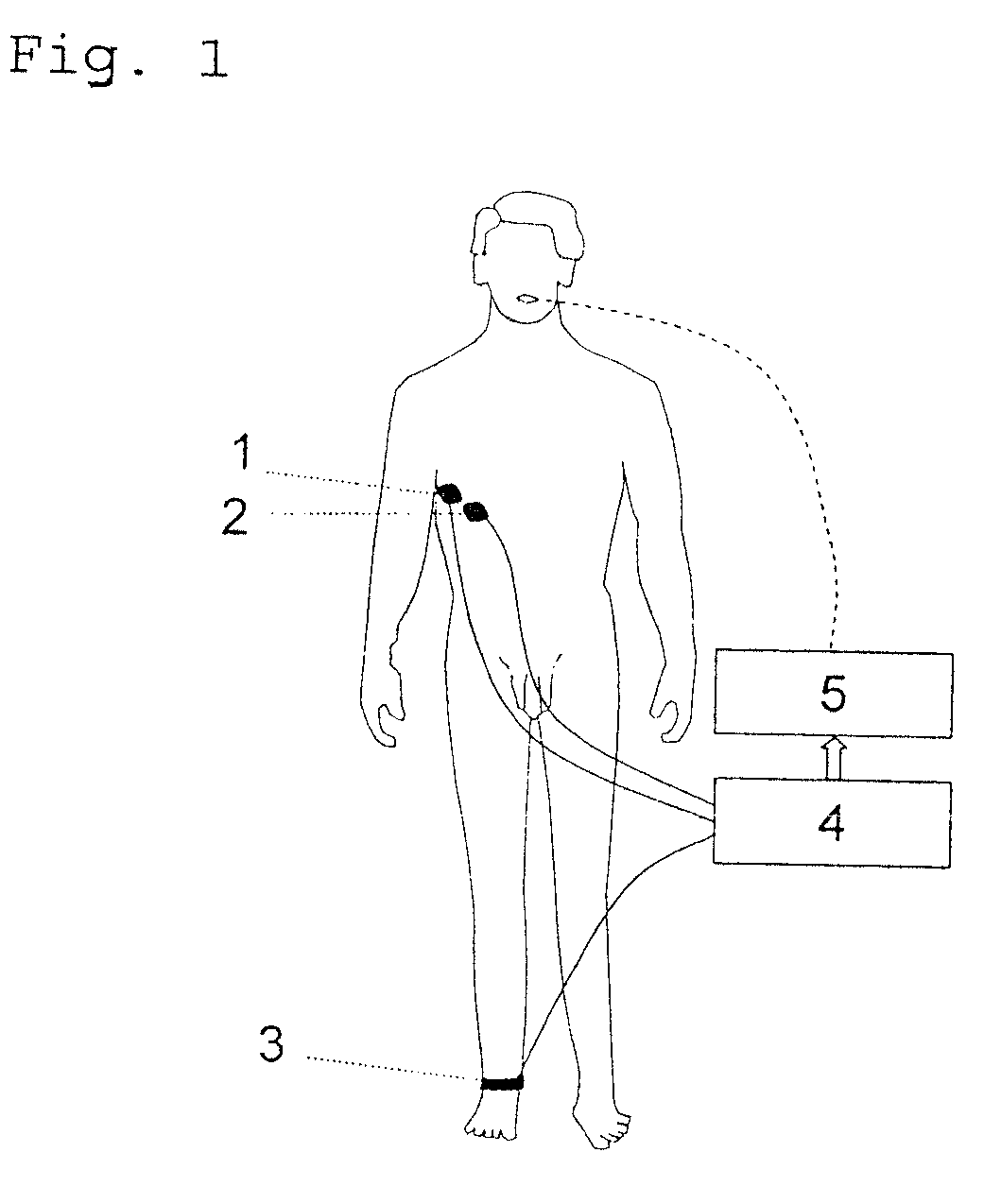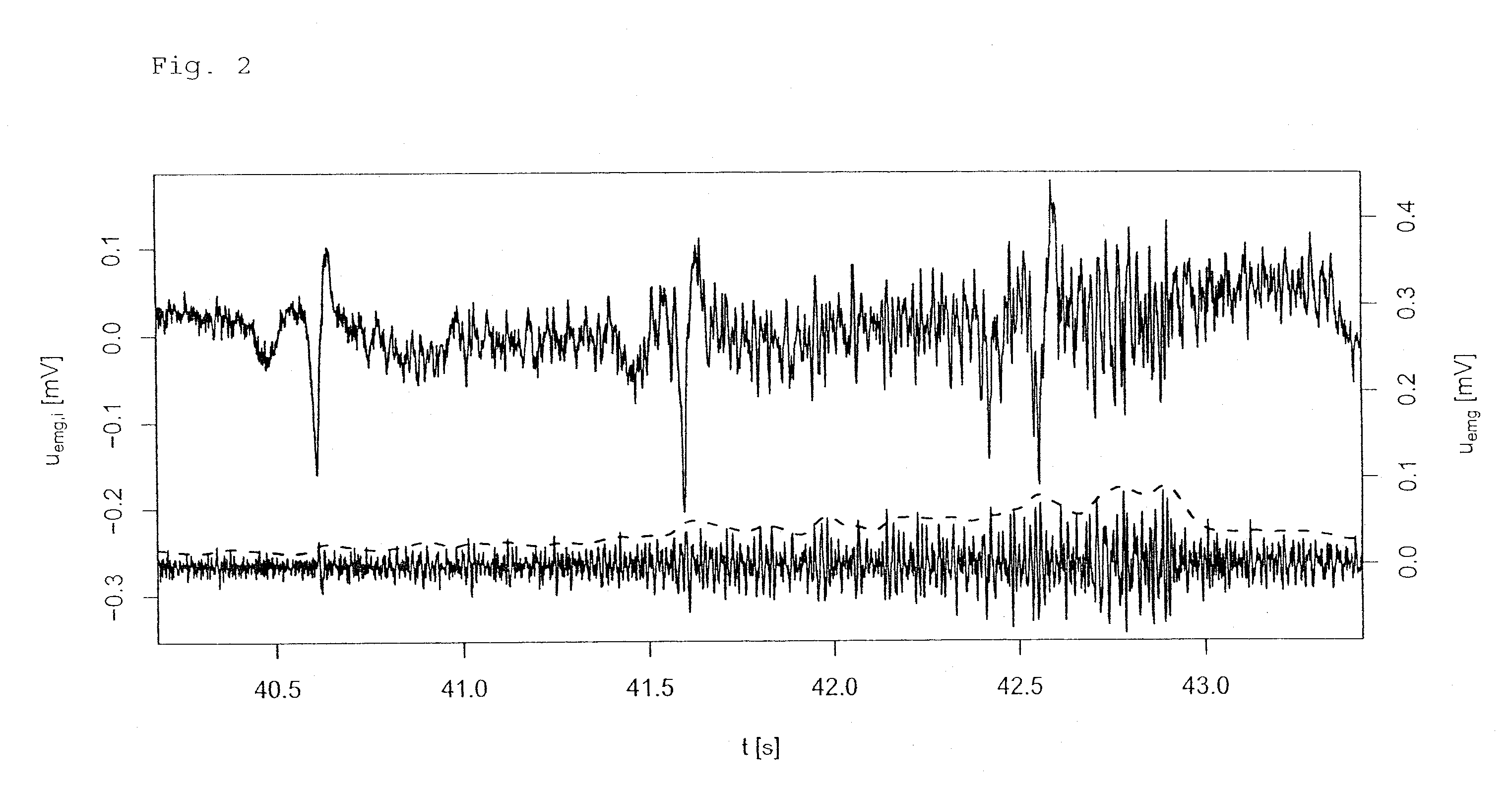Method of automatically controlling a respiration system and a corresponding respirator
a technology of respiration system and respirator, which is applied in the direction of respiratory organ evaluation, operating means/releasing devices for valves, diagnostic recording/measuring, etc., can solve the problems of large errors in determining the technical parameter of breathing, decrease of risk of runaway, and inability to guarantee the validity of measurement. , to achieve the effect of convenient for patients
- Summary
- Abstract
- Description
- Claims
- Application Information
AI Technical Summary
Benefits of technology
Problems solved by technology
Method used
Image
Examples
Embodiment Construction
[0039]Referring to the drawings in particular, according to the present invention, the breathing activity signal can be recorded alternatively by electromyography or mechanomyography, both methods providing a signal representing the muscular exertion; a signal representing the electric excitation of the muscle in the first case and a signal representing the mechanical vibrations of the muscle in the second case. Reference will be made below mostly to the electromyographic alternative, and this should be understood such that it would alternatively also be possible to use mechanomyographic signals.
[0040]In an advantageous embodiment, the value of the breathing activity signal uemg(t) is checked continuously in the control unit to determine whether the signal is below another threshold value criterion, and a passive period of the breathing cycle is established for the duration of the period during which said signal is below said threshold value, and the other lung mechanical parameter ...
PUM
 Login to View More
Login to View More Abstract
Description
Claims
Application Information
 Login to View More
Login to View More - R&D
- Intellectual Property
- Life Sciences
- Materials
- Tech Scout
- Unparalleled Data Quality
- Higher Quality Content
- 60% Fewer Hallucinations
Browse by: Latest US Patents, China's latest patents, Technical Efficacy Thesaurus, Application Domain, Technology Topic, Popular Technical Reports.
© 2025 PatSnap. All rights reserved.Legal|Privacy policy|Modern Slavery Act Transparency Statement|Sitemap|About US| Contact US: help@patsnap.com



